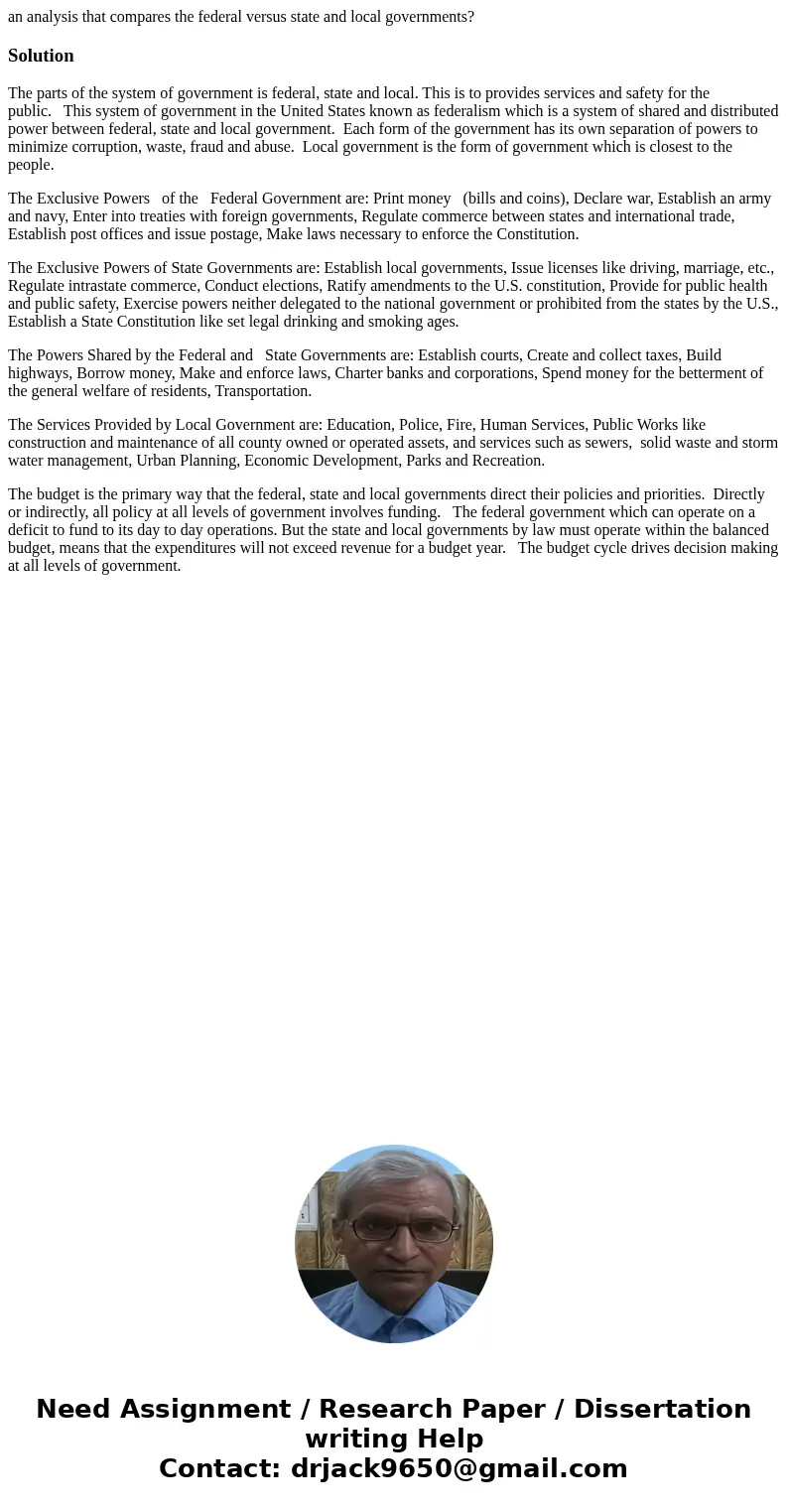an analysis that compares the federal versus state and local
an analysis that compares the federal versus state and local governments?
Solution
The parts of the system of government is federal, state and local. This is to provides services and safety for the public. This system of government in the United States known as federalism which is a system of shared and distributed power between federal, state and local government. Each form of the government has its own separation of powers to minimize corruption, waste, fraud and abuse. Local government is the form of government which is closest to the people.
The Exclusive Powers of the Federal Government are: Print money (bills and coins), Declare war, Establish an army and navy, Enter into treaties with foreign governments, Regulate commerce between states and international trade, Establish post offices and issue postage, Make laws necessary to enforce the Constitution.
The Exclusive Powers of State Governments are: Establish local governments, Issue licenses like driving, marriage, etc., Regulate intrastate commerce, Conduct elections, Ratify amendments to the U.S. constitution, Provide for public health and public safety, Exercise powers neither delegated to the national government or prohibited from the states by the U.S., Establish a State Constitution like set legal drinking and smoking ages.
The Powers Shared by the Federal and State Governments are: Establish courts, Create and collect taxes, Build highways, Borrow money, Make and enforce laws, Charter banks and corporations, Spend money for the betterment of the general welfare of residents, Transportation.
The Services Provided by Local Government are: Education, Police, Fire, Human Services, Public Works like construction and maintenance of all county owned or operated assets, and services such as sewers, solid waste and storm water management, Urban Planning, Economic Development, Parks and Recreation.
The budget is the primary way that the federal, state and local governments direct their policies and priorities. Directly or indirectly, all policy at all levels of government involves funding. The federal government which can operate on a deficit to fund to its day to day operations. But the state and local governments by law must operate within the balanced budget, means that the expenditures will not exceed revenue for a budget year. The budget cycle drives decision making at all levels of government.

 Homework Sourse
Homework Sourse